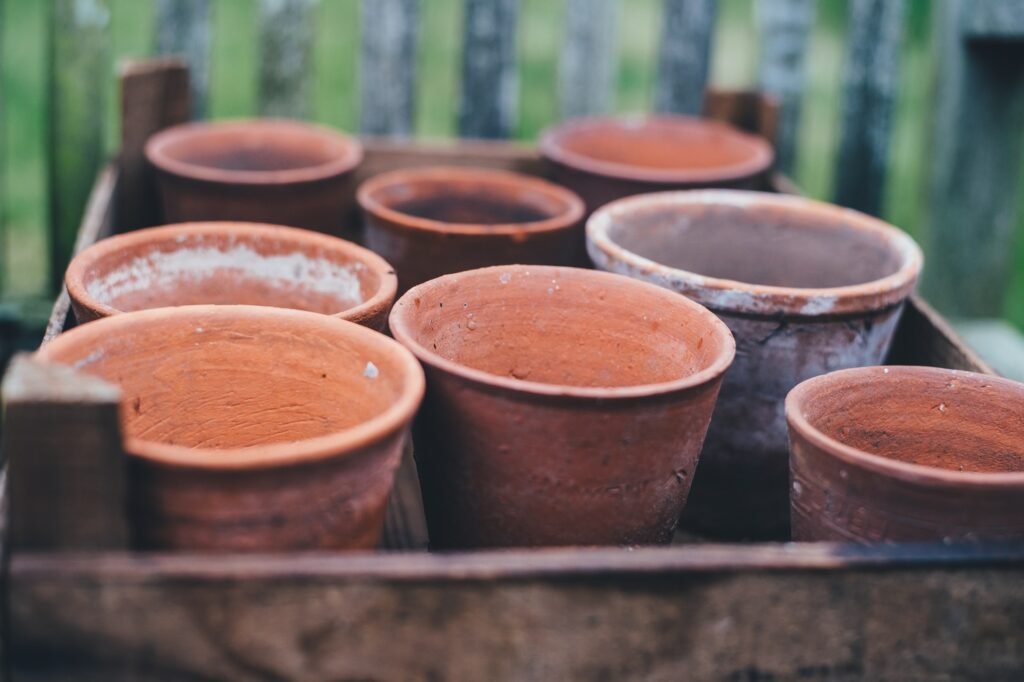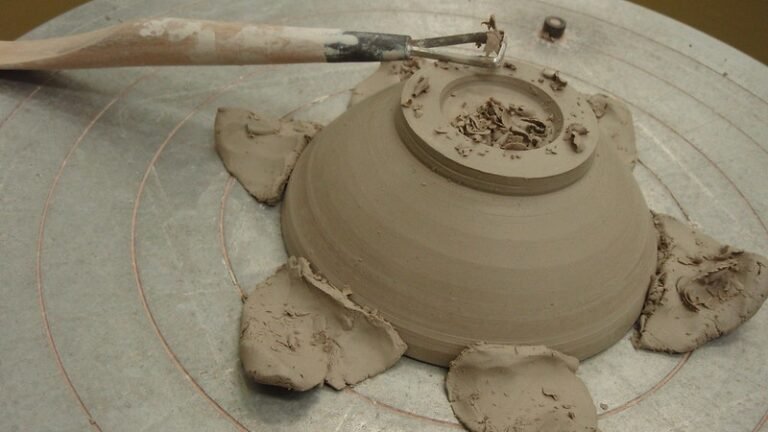Where is Pottery Found? Explained!
Pottery originates before the Neolithic period and that makes it one of the oldest human inventions. All different types of pottery lay buried in the ground for thousands of years spread around the world.
There are a couple of reasons for that and in this article, we will discuss why exactly pottery is found in excavation?
Pottery is found in excavation because during ancient times people were using pots and objects made of clay. The material is non-organic, very chemically stable, and extremely long-lasting. It can stay buried under the surface for 30 000 years, so it is pretty common it will be found in archaeology as intact vessels or pottery shreds.
In the neolithic period, pottery was widely used as plastic is today. All sorts of household items back in that time were made of clay.
In the pottery-making process, clay is getting fired at high temperatures and that way clay is transforming into an element that is very strong, durable, and cannot be decomposed easily.
Other organic material like wood or cloth would rot, metal corrode but not clay. Thousands of years later it can still be found in pieces or even preserved. It is actually a man-made stone, and it can last almost as long as stones.
Why Is Pottery One Of The Most Common Finds On An Excavation Site?
Pottery is useful and relatively easily made, so it’s a very common kind of object anywhere. Many cultures were using pottery for cooking and serving food, storing things, or food grains.
It was the cheapest, oldest, and most common form of home-ware that was available during ancient times.
It’s highly resistant to degrading but fairly fragile, so when it breaks it produces many fragments which stay scattered around. Once household items broke they were often dumped right outside the cave, hut, or house.
Pottery is non-organic and as such, it endures through time and can be easily found during excavations, but luckily it doesn’t affect the environment.

Significance Of Pottery In Archaeology
By researching the unmatched old pieces of ceramics, archeologists can get a better understanding of people in the past. Shapes and decorations can tell a lot and be a powerful key for unlocking the everyday actions and lifestyle of people who lived long ago.
Usually, potters would make some characteristic styles of pots depending on a region or community.
Pots and styles were shared among groups, and that way archaeologists can often relate sites in time and space because they contain the same ceramic types.
Archeologists also can use pottery to determine a person’s social ranking, their relationship to others in the group, or even their gender.
Another interesting fact is Archaeologists found chemical traces of the fermented drop in pieces of pottery dug from ancient villages.
That means Humans have made and enjoyed wine for at least 8,000 years.
Evidence of Pottery Production
Not only pottery might be found on archaeological excavations but also firing areas, kilns, kiln furniture, workshop structures, pottery wasters, pottery-making equipment, and tools, dumps, or spreads of raw material and fuel for firing.
The simplest pottery firing technology was open firing which is also called bonfire firing and that is the reason that ruins are found on many excavation sites.
To construct the kiln outside, was the easiest by that time and the materials and methods may vary so not all types would leave remains that can be easily recognizable.
Kiln superstructures rarely survive archaeologically. Although parts of the collapsed or demolished superstructure are sometimes recovered from inside kilns during excavation, it is extremely difficult to reconstruct their form because of the fragmentary nature of the remains.
If you are interested in how Kiln works: Check this article for more details.
Why Is Pottery Found In Plough Fields?
Just like in archaeological excavation, fields are also likely to be filled with old ceramics and there is a big chance you may find pieces of pottery when you plow your land.
One explanation could be that there had been a building on your land back in the past, but it could also be a mixture of gravel and sand. The broken bits were used as hard standing, laid in the gateway to stop carts sinking in the mud.
Such findings in the ground are known as pottery wasters.
Pottery Wasters – What Are They?
Pottery wasters are remains of ceramics like damaged or deformed dishes that were broken or damaged during firing and are one of the primary signifiers of a pottery production site.
As we know, If overheated, the vessels could crack during the process and become unuseful. Occasionally, whole stacks of vessels have been found collapsed, and they are harder to identify but for archaeology, they are an important category of the artifact at pottery production sites because they provide a good deal of information on production processes.
What Is The Oldest Pottery?
The ancient fragments of fired clay were excavated in the 1960s in south China’s Jiangxi province. Ceramic pots are from the Xianrendong cave and researchers had estimated that the pieces could be 20,000 years old, so they are currently the oldest fragments of pottery in the world.
These pots were made from clay, with added sand, quartz, and feldspar, so they can survive drying and firing. They were made by Paleolithic hunter-gatherers and fired at low temperatures, most likely pit-fired.
Using pottery, they could boil, bake and steam food, so it enabled a huge increase in the range and quantity of food that could be prepared and consumed. Being able to cook liquid food in a pot was a major advance.
Don’t throw away your broken pottery! 3 things you can do with your broken pots and planters
- Use for drainage – Use your broken dishes and pottery as drainage in your planters.
- Make some mosaics – you can make nice mosaics using colorful pieces for you or for your friends.
- Turn it on its side – If you turn it on the side, it will create a more interesting and unique look in your garden.







